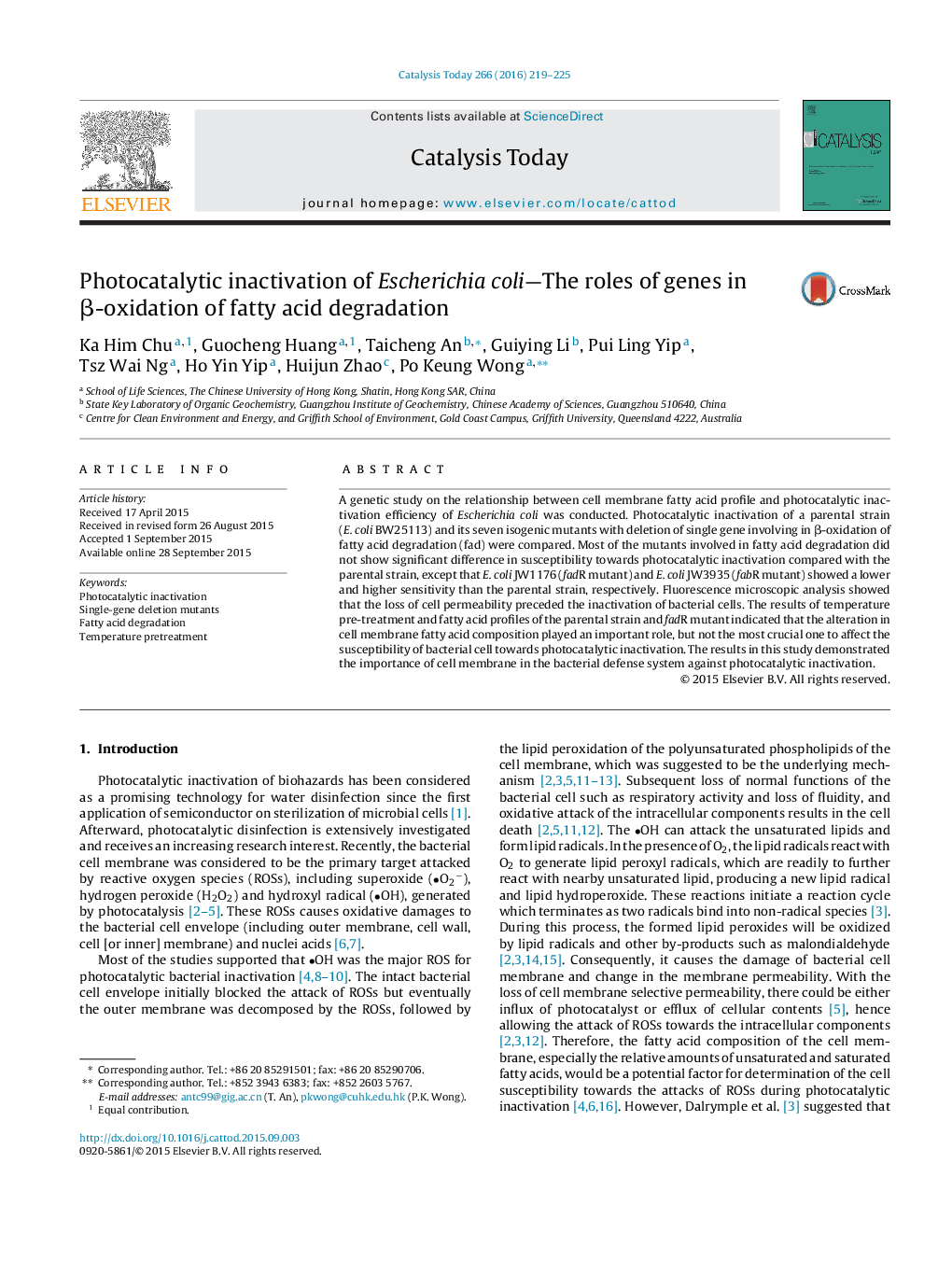| Article ID | Journal | Published Year | Pages | File Type |
|---|---|---|---|---|
| 53698 | Catalysis Today | 2016 | 7 Pages |
•Most of the mutants did not show difference towards photocatalytic inactivation.•The isogenic fadR mutant is more resistant towards photocatalytic inactivation.•Loss of cell permeability occurred before inactivation of bacterial cells.•fadR gene deletion has no significant effect on cell membrane fatty acid profile.•Pre-incubation temperature affects the fatty acid composition of cell membrane.
A genetic study on the relationship between cell membrane fatty acid profile and photocatalytic inactivation efficiency of Escherichia coli was conducted. Photocatalytic inactivation of a parental strain (E. coli BW25113) and its seven isogenic mutants with deletion of single gene involving in β-oxidation of fatty acid degradation (fad) were compared. Most of the mutants involved in fatty acid degradation did not show significant difference in susceptibility towards photocatalytic inactivation compared with the parental strain, except that E. coli JW1176 (fadR mutant) and E. coli JW3935 (fabR mutant) showed a lower and higher sensitivity than the parental strain, respectively. Fluorescence microscopic analysis showed that the loss of cell permeability preceded the inactivation of bacterial cells. The results of temperature pre-treatment and fatty acid profiles of the parental strain and fadR mutant indicated that the alteration in cell membrane fatty acid composition played an important role, but not the most crucial one to affect the susceptibility of bacterial cell towards photocatalytic inactivation. The results in this study demonstrated the importance of cell membrane in the bacterial defense system against photocatalytic inactivation.
Graphical abstractFigure optionsDownload full-size imageDownload high-quality image (135 K)Download as PowerPoint slide
